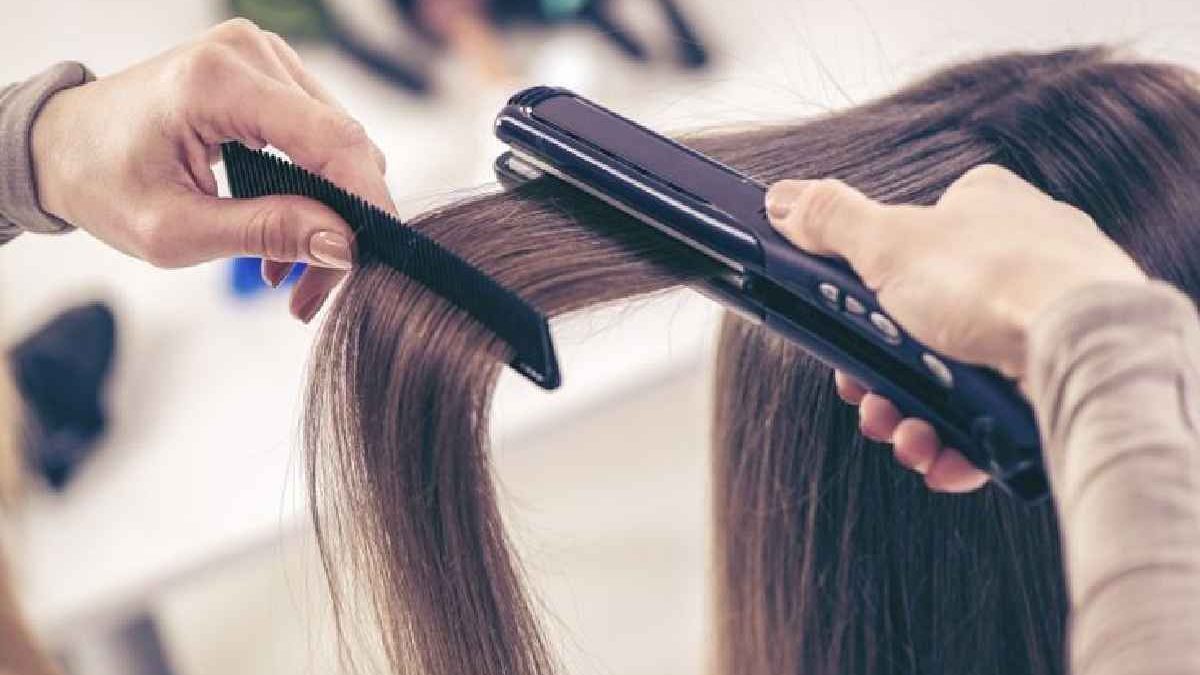Table of Contents
Introduction to Hair Straightening
Straightening Smarts – Hair straightening is a popular styling technique that can transform frizzy, wavy, or curly hair into sleek, smooth strands. However, the process, if not done correctly, can lead to hair damage. This guide aims to provide you with the best practices to maintain healthy and sleek hair while enjoying the straight look you love.
Understanding Your Hair Type
Before you embark on any hair straightening routine, it’s essential to understand your hair type. Hair can be fine, medium, or thick, and each type responds differently to heat and styling products. Fine hair, for instance, is more susceptible to heat damage, while thick hair may require higher temperatures for effective straightening.
Choosing the Right Tools
Investing in the right tools is crucial for hair straightening. A quality flat iron with adjustable temperature settings is a must. Look for flat irons with ceramic or tourmaline plates, as they distribute heat more evenly, minimizing damage. A heat protectant spray is also non-negotiable to shield your hair from high temperatures.
Preparing Your Hair for Straightening
Proper preparation can make a significant difference. Start by washing your hair with a gentle, hydrating shampoo and conditioner. Pat your hair dry gently with a towel and apply a heat protectant. Detangle your hair using a wide-tooth comb to avoid breakage.
Effective Straightening Techniques
When straightening, work in small sections for even results. Begin close to the roots but not right at the scalp to avoid burns. Glide the flat iron down each section in a smooth, steady motion. Avoid going over the same section multiple times, as this can cause unnecessary heat exposure.
Maintaining Straightened Hair
To maintain your sleek look, use a lightweight serum or hair oil to add shine and reduce frizz. Sleep on a silk or satin pillowcase to reduce friction and prevent your hair from getting tangled and frizzy overnight.
Avoiding Common Straightening Mistakes
One common mistake is using the flat iron on damp or wet hair, which can cause significant damage. Always ensure your hair is completely dry before straightening. Another mistake is setting the temperature too high. Use the lowest effective temperature setting for your hair type to minimize damage.
Hair Care Post-Straightening
After straightening, it’s vital to nourish your hair. Use a deep conditioning treatment once a week to restore moisture and repair any damage. Avoid washing your hair too frequently, as this can strip natural oils and lead to dryness.
Professional Hair Straightening Services
For those who prefer a longer-lasting straightening effect, professional hair straightening services like keratin treatments or Japanese straightening can be an option. These treatments can keep your hair straight for months but should be done by experienced professionals. Oz Hair and Beauty offers a range of professional hair straightening services that cater to different hair types and needs.
Natural Hair Straightening Alternatives
If you’re looking for a less damaging alternative to traditional straightening methods, consider natural straightening methods. These can include using a mixture of milk and honey as a hair mask or wrapping your hair tightly around your head while it dries. These methods are gentler but may not provide the same lasting effect as a flat iron.
Conclusion: Embracing Your Unique Hair Type
Hair straightening can be a safe and effective way to achieve sleek, smooth hair when done correctly. Remember to choose the right tools, use proper techniques, and provide your hair with the care it needs before and after straightening. Embrace your unique hair type and tailor your hair care routine to suit its needs. With these tips, you can enjoy straight, healthy, and beautiful hair.


